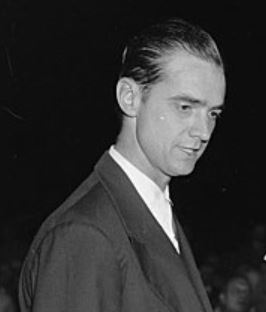
Howard Hughes aviator; business tycoon, filmmaker, engineer, entrepreneur, and aviator extraordinaire, member of the Longines Honor Roll, lived a rather controversial life. His eccentric endeavors, incredible wealth, reclusive nature, and mysterious final years captivated the American people.
Wrapped in intrigue, Hughes inspired awe, speculation, and hoax. He dated a number of infamous Hollywood actresses such as Billie Dove, Faith Domergue, Bette Davis, Ava Gardner, Olivia de Havilland, Katharine Hepburn, Ginger Rogers, Rita Hayworth, and Gene Tierney. These associations only added to Hughes’s mysterious allure.
Above all else, Hughes was an extraordinary pilot who was best placed in the cockpit of the various planes he flew, and the numerous he designed. He is best remembered as an innovative aerospace engineer and record-breaking aviator. As Hughes said himself, “I want to be remembered for one thing: my contribution to aviation.”[1]
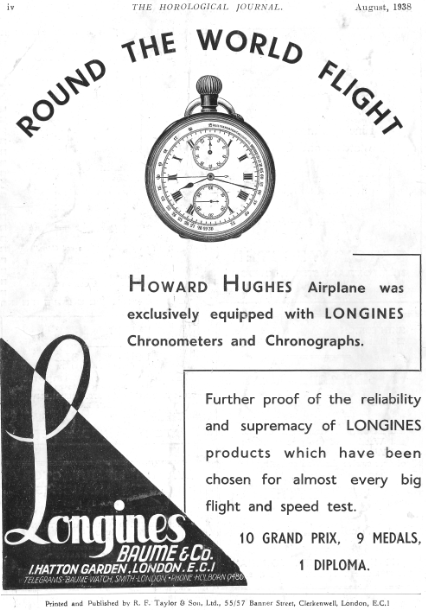
Born on December 24th, 1905, in Harris County, Texas, Hughes went on to inherit his Father’s fortune at just nineteen after the untimely death of both parents. An incredibly ambitious young man, he went on to amass further wealth expanding into film, real estate, aerospace technology, and commercial air travel.
He left Texas for Los Angeles in 1925 hoping to make a name for himself in the alluring world of Hollywood film.
In 1930 Hughes directed and produced the immensely successful WWI epic Hells Angels. He hired more than 40 vintage aircraft and depicted aerial flight footage that astonished critics and audiences alike.
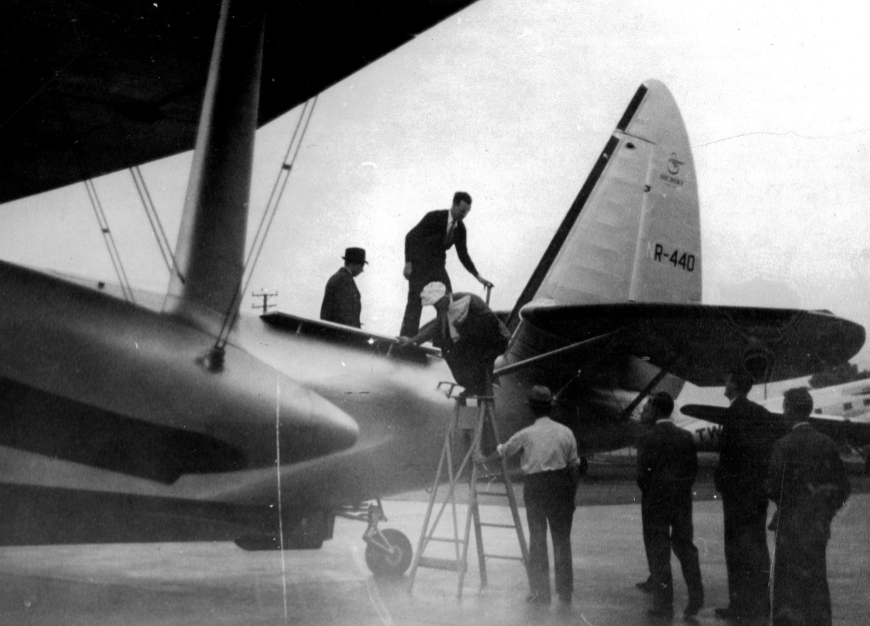
Hughes learned to fly during this time in order to be fully immersed in the creative process. During filming Hughes himself crashed and three pilots lost their lives. Flying was still a dangerous pursuit and his drive toward perfection and authenticity amassed casualties.
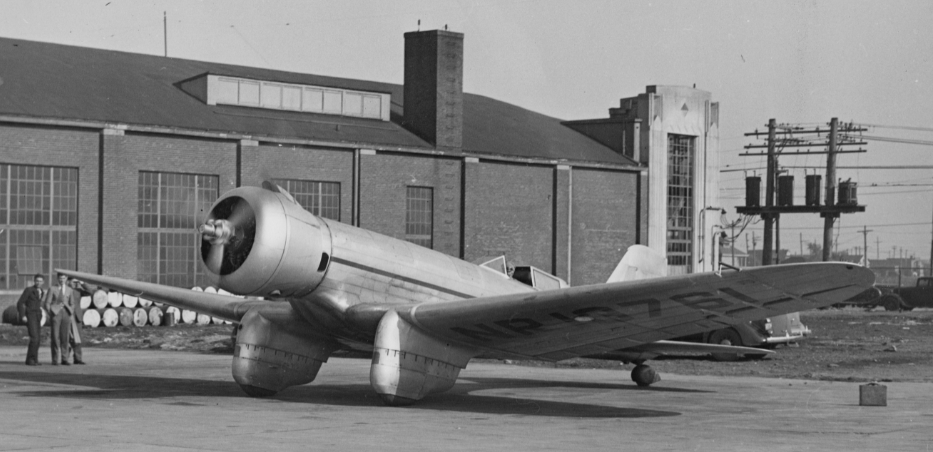
He produced a number of successful films after Hells Angels but had found his passion in aviation. He had conquered the earth, in both business and entertainment, and set forth to conquer the skies.
Hughes was a lifelong aircraft enthusiast and commissioned a number of custom-built planes. The Hughes H-1 racer was one of the most technologically significant aircraft of its time.
On September 13th, 1935, in the H-1, Hughes set the land plane airspeed record of 352mph (566 km/h).
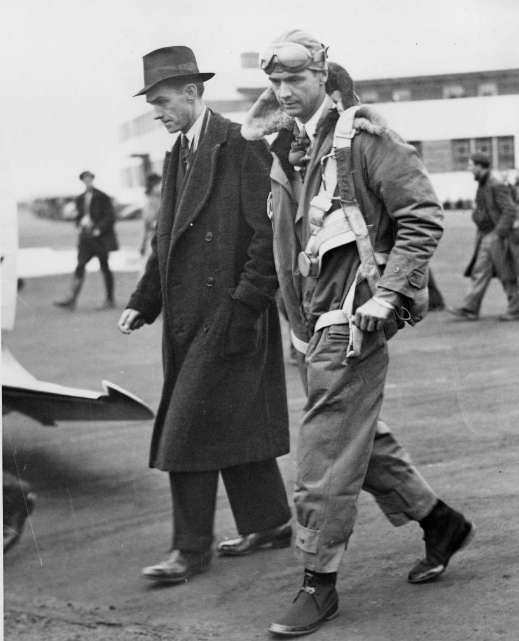
A modified version of the H-1 Racer, with longer wings, went on to set a new transcontinental airspeed record on January 19th, 1937. Flying non-stop from Los Angeles to Newark in 7 hours and 28 minutes Hughes average ground speed reached an incredible 322mph (518 km/h).
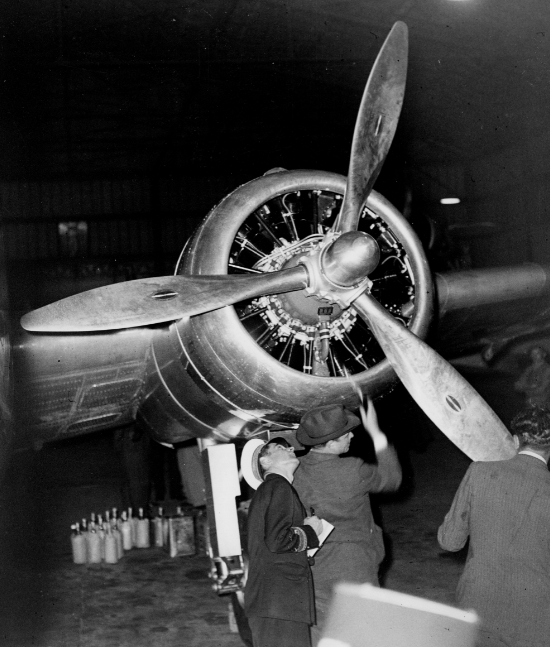
Now on display at the National Air and Space Museum, the H-1 Racer is suspected to have influenced the design of numerous WWII fighters.
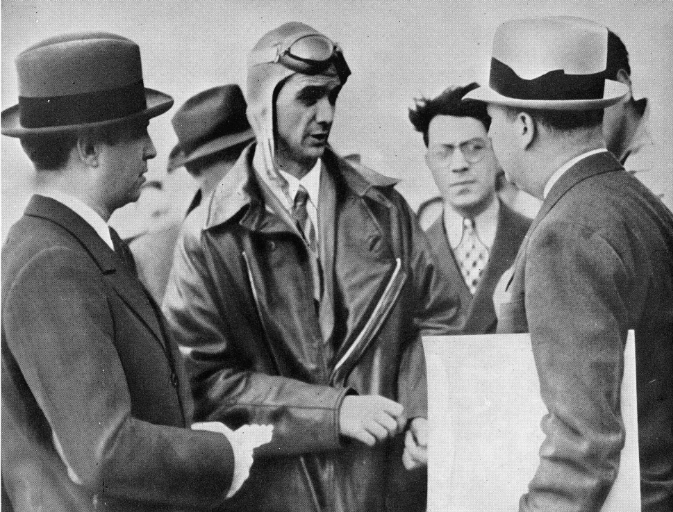
With innovative design features such as retractable landing gear and drag-reducing components, the H-1 paved the way for aircraft such as the Focke-Wulf Fw 190, Mitsubishi Zero, and the F8F Bearcat.
Hughes went on to set the round the world flight record in 1938. Passing through New York, Paris, Moscow, Omsk, Yakutsk, Fairbanks, and Minneapolis before returning to New York City in just 91 hours. This broke the previous around the world record flight by almost 4 days.
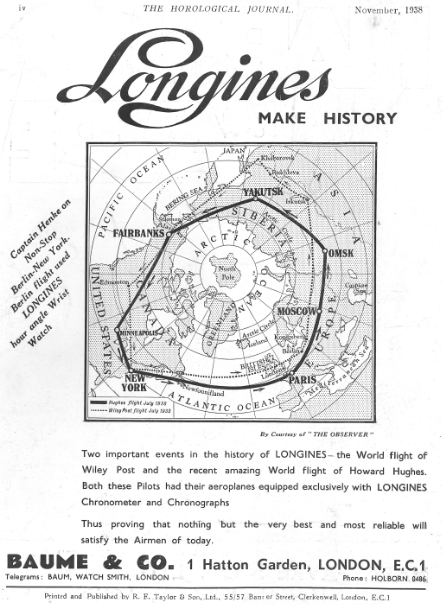
Flying a Lockheed 14 Super Electra he managed to beat the previous record by almost 4 days. The watches inside his Electra displayed time in sidereal time (hour angles, minutes, and minute arcs. Sideral time measures the rotation of the earth using the stars, allowing the pilot to determine their position at night, or when at sea.
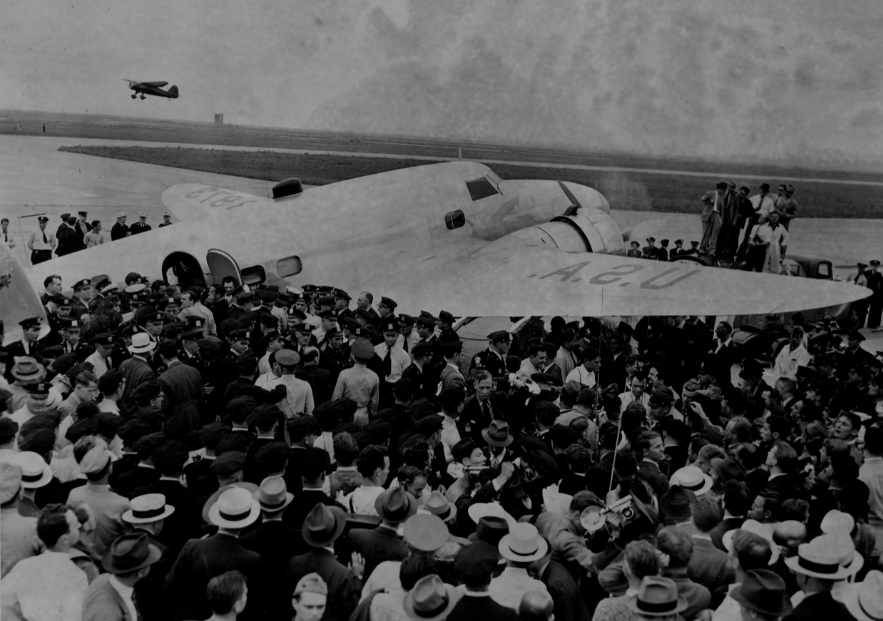
Hughes endeavored to prove that long-distance commercial air travel was possible, safe, and achievable; normalizing the idea of long-distance flight to the American consciousness.
An obscure director returned an aviation hero, with a ticker-tape parade to honor the record-breaking flight.
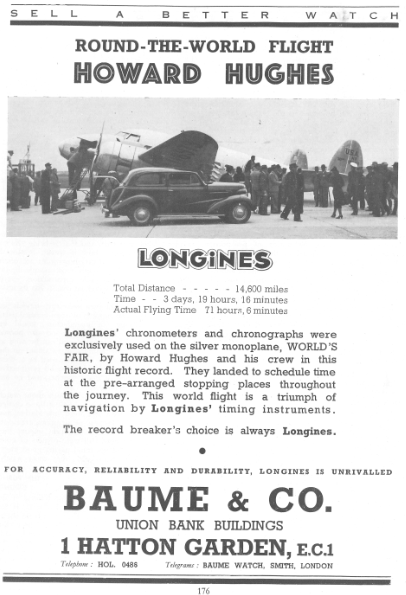
Hughes went on to receive the Harmon Trophy in 1936 and 1938, the Collier Trophy and the Bibesco Cup of the Fédération Aéronautique Internationale in 1938, and the Octave Chanute Award in 1940.
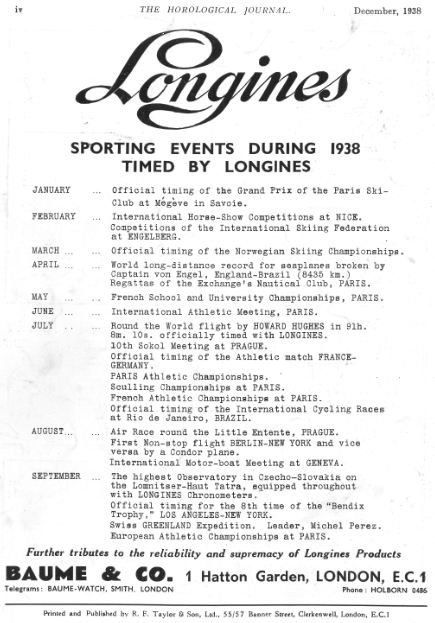
In 1939 Hughes was awarded a special Congressional Gold Medal “in recognition of the achievements of Howard Hughes in advancing the science of aviation and thus bringing great credit to his country throughout the world.”[2]
In 1946 Ed Herlihy, a reporter with Universal International, remarks “American aviation trailblazers willingly pay the price in man’s conquest of the air.”[3]
The broadcast details Hughes’s near-fatal crash in his prototype U.S Army Air Forces reconnaissance aircraft, the XF-11.
The plane rapidly lost altitude, due to an oil leak, and violently crashed into a Beverley Hills neighborhood.
Three houses were destroyed, the fuel tanks exploded and, with the plane ablaze, Hughes managed to pull himself out of the burning wreckage to relative safety.
There he lay until discovered by Marine Master Sgt. William L. Durkin. Hughes suffered third-degree burns, a crushed collar bone, broken ribs, and a collapsed lung.
Only 3 years prior, practicing touch-and-go landings in his Sikorsky S-43 amphibian aircraft, Hughes crashed into Lake Mead.
Ceco Cline, a CAA inspector, and employee Richard Felt were killed in the crash with Hughes suffering a gash to the head. These qualifying tests, in preparation for the H-4 Hercules, almost cost him his life and killed two others.
The Hercules was only to fly once, for one mile, in 1947. Commissioned by The War Production Board the craft was to transport troops and equipment throughout WWII.
Designed and built by the Hughes team it was the largest wooden aircraft and flying boat the world had ever seen. At 319 feet 11 inches, she was gargantuan.
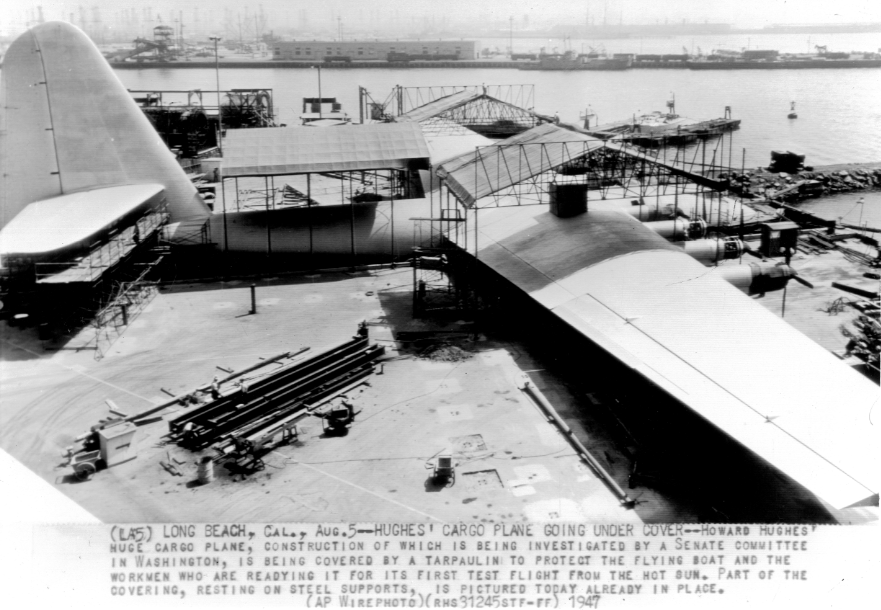
The Hercules never made it into battle and resides in McMinnville, Oregon, as part of the Evergreen Aviation Museum.
During and after WWII Hughes Aircraft Company became a major defense contractor. The company manufactured products such as military aircraft, spacecraft vehicles, radar systems, the first working laser, electro-optical systems, aircraft computer systems, missile systems, ion-propulsion engines, and commercial satellites.
Not content with only aviation technologies the company branched off into the Hughes Aerospace Group. At a time when space travel seemed a thing of the far-flung future, Hughes was investing in aerospace technologies. He is reported to have said, “Do the impossible because almost everyone has told me my ideas are merely fantasies.”[4]
In his lifetime Hughes owned both Trans World Airlines and Hughes Air West.
Hughes, seeking a better alternative to Trans World Airlines fleet of Boeing 307 Stratoliners led to the creation of the revolutionary Constellation by Lockheed. Trans World Airlines purchased 40 of these aircraft right from the production line.
In 1970 he purchased Air West, renaming the airline, Hughes West. It is here that Hughes revolutionized commercial air travel and by the late 1970s, with an all-jet fleet, Hughes West had established an extensive network of routes within the United States.
By 1980, there were established routes as far as Houston Hobby Airport and Milwaukee. Before merging with Republic Airlines in the late 1980s, Hughes West serviced a total of 42 destinations.
Hughes hid from the public eye in the later years of his life.
Many believed him to be suffering from an extreme mental health condition. He was only contactable via phone or letter and rarely made contact with people.
Hughes continued to conduct business transactions and correspondences in this manner. In 1976 Hughes died, rather fittingly, on a plane in transit to the Methodist Hospital in Houston Texas.
Footnotes
An extraordinarily intriguing individual who revolutionized commercial air travel and aerospace technologies. Hughes will certainly be remembered for his “contribution to aviation.”[5]
- Howard Hughes, The Legendary Howard Hughes Jr, (Jean Rojas), http://hrhughesjr.webs.com/aviationhighlights.htm (date accessed 10/08/16).
- United States Congress, Congressional Gold Medal, (1939)
- Ed Herlihy, ‘Hughes Plane Crash’, Universal Newsreels, (Universal International, 1946), https://en.wikipedia.org/wiki/File:1946-07-11_Hughes_Plane_Crash.ogv (date accessed 10/08/16).
- Howard Hughes, AZQuotes.com, (Wind and Fly LTD, 2016). http://www.azquotes.com/quote/783099, (date accessed: 10/08/16).
- Howard Hughes, The Legendary Howard Hughes Jr, (Jean Rojas), http://hrhughesjr.webs.com/aviationhighlights.htm (date accessed 10/08/16).
Bibliography
Herlihy, Ed. ‘Hughes Plane Crash’, Universal Newsreels, (Universal International, 1946), https://en.wikipedia.org/wiki/File:1946-07-11_Hughes_Plane_Crash.ogv (date accessed 10/08/16).
Hughes, Howard. AZQuotes.com, (Wind and Fly LTD, 2016). http://www.azquotes.com/quote/783099, (date accessed: 10/08/16).
Hughes, Howard. The Legendary Howard Hughes Jr, (Jean Rojas), http://hrhughesjr.webs.com/aviationhighlights.htm (accessed 10/08/16).
Purnell W., Choppin. ‘From a Three-Headed Bit to a Major Philanthropy: The Surprising Legacy of Howard Hughes’, Proceedings of the American Philosophical Society, vol. 142, No.3, (American Philosophical Society, 1998) pp. 452 – 431.
United States Congress, Congressional Gold Medal, (1939)
